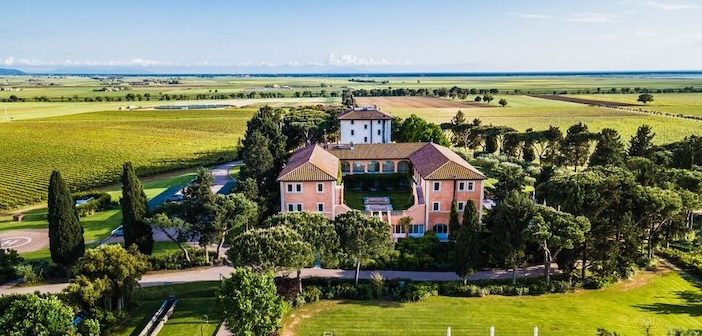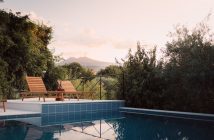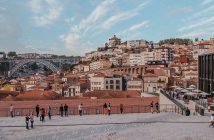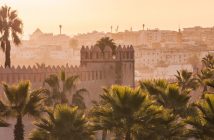On Tuscany’s lesser-known coast, where flamingos stalk the wetlands and butteri cowboys roam the plains, Jessica Baldwin discovers a former Grand Duke’s estate transformed into a serene, five-star retreat where la dolce vita meets the wild spirit of Maremma…
“It’s the bit where your thigh starts feeling tickly,” I blurt out, resorting — somewhat inelegantly — to that classic British fallback: Italian ‘boot’ geography. To be fair, I was being a little impish; I could simply have said I was off to the Tuscan coast – it would’ve spared everyone the inappropriate limb tickling. But with windswept wetlands, cattle-filled plains and more than its fair share of cowboys, Maremma is a different beast altogether — it’s Tuscany’s wild side, if you will.
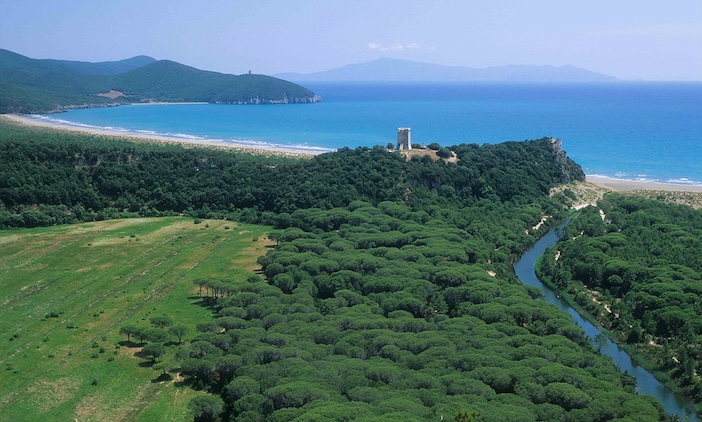
For centuries, this curious chunk of Italy, radiating inland from the crystalline Tyrrhenian Sea, was utterly uninhabitable. Abandoned to nature since Roman times, it became one great big malaria-ridden quagmire. In fact, back then, Italians would do everything they could to avoid a trip to “bitter Maremma” — with more snakes and deadly diseases than inhabitants, it was the kind of journey for which a one-way ticket always sufficed.
Enter Leopold II, the last reigning Grand Duke of Tuscany, who in the 1800s was hell-bent on reclaiming the Maremma from the swamps. Today, its peaceful coastal plains are among Tuscany’s most fertile land — and whilst mozzies linger, the malaria is long gone. Thankfully, despite its epic metamorphosis, the Maremma remains wild at heart. In the untamed highlands, boar and wolves patrol the ancient forests, whilst on the plains it’s down to the traditional butteri cowboys to keep the curious-looking long-horned Maremmana cattle in check. In what remains of its wetlands, flamingos prance around fish-filled lagoons, hundreds of rare bird species soaring overhead. As I said, it’s a different beast.
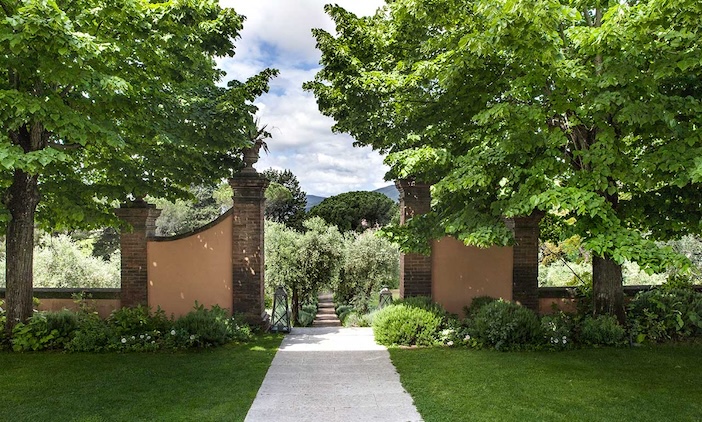
Yet, despite the arrival of various five-star hotels, Michelin-starred restaurants and award-winning wineries, for the most part this spectacular region remains the closely guarded secret of nature-loving Italians – and it’s all the better for it. With Florence’s galleries and Siena’s Gothic marvels distracting the other Brits nicely, I slipped off to Tenuta La Badiola, a storied 1,200-acre Maremmano wine estate. As the Grand Duke’s summer residence, La Badiola is the place where the region’s fortunes were reshaped forever — and where better to stay than at the fulcrum of Maremma’s story?
Oh, if Leopold could see his beloved villa now: olive-carpeted hills collapsing into a lush patchwork of orchards, vineyards and meadows which stretch right up to the glittering coast. And though much has changed above ground, beneath, La Badiola’s precious Acquagiusta spring still bubbles away, giving life to the estate’s gardens, groves and vines with every drop.
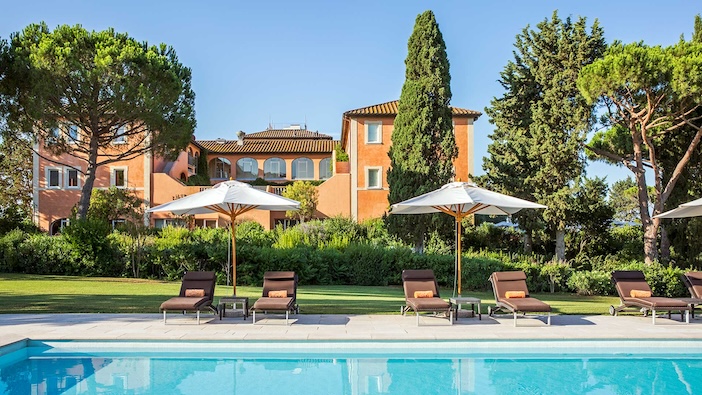
Accessed via a theatrical parade of centuries-old cypress trees and maritime pines, this idyllic estate —which once housed an entire village — is now under the ownership of the Moretti family. Visit today and you’ll find the five-star L’Andana Resort, complete with a Michelin-starred restaurant, winery, driving range and a bells-and-whistles ESPA spa.
Like the Maremma itself, part of the estate’s charm lies in its sense of space. Even at full capacity it never feels crowded, each guest quietly gravitating to a favoured nook — a sunlit terrace, a flower-fringed lawn or one of the many secluded pools. The accommodation is just as…well, accommodating. For those inclined to surrender to the decadent trappings of a five-star hotel, the main villa’s 33 rustic Tuscan suites and guestrooms are just the ticket. Generously proportioned and classically styled, the laid-back, sunlit abodes are just steps from the spa and main restaurant. However, those wanting to dip in and out of the action usually retreat to the outbuildings…
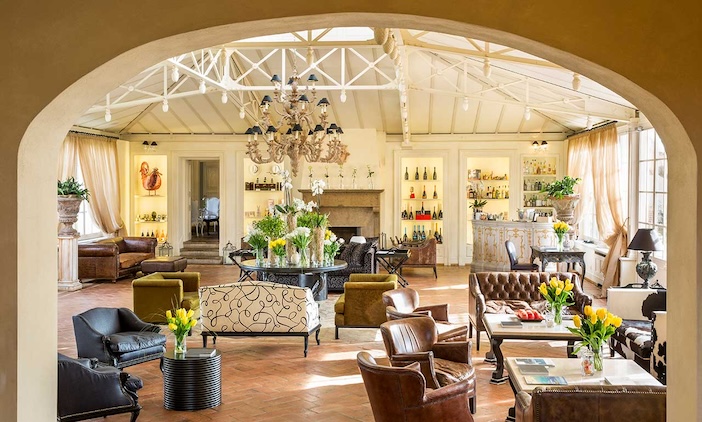
Set beside the fairways, La Casa’s 14 hideaways come with the added bonus of a little outside space in the form of a terrace or garden access, letting keen golfers tee off in style. Meanwhile, in the ancient barn, poolside Il Granaio’s 10 interconnecting suites suit families — there’s even a complimentary kids’ club nearby. Whilst for those seeking an authentic home-from-home experience, it’s hard to beat La Scuderia: a new four-bedroom villa set in generous private gardens with its own pool.
Whichever room you tumble into, you’ll find L’Andana’s trusty “experiences menu” perched expectantly on the bedside. Think of it as their very own Gideon Bible — only instead of parables it preaches scuba diving in the Mar Tirreno, galloping through wildflower meadows and coastal forays in one’s own Ferrari. Less fire and brimstone, more la dolce vita — very “good news” indeed.
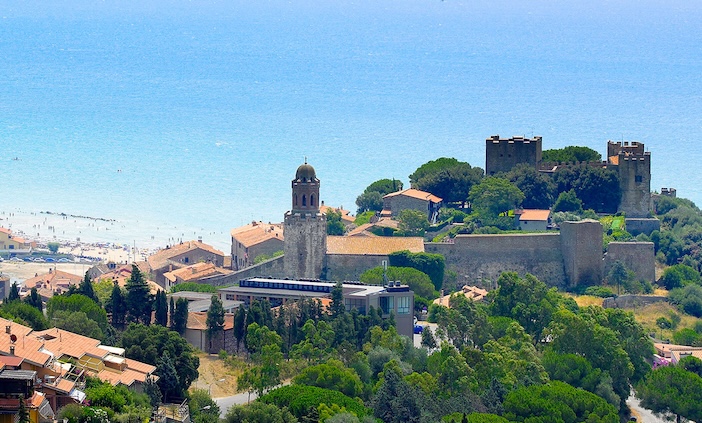
For a humbler affair, guests can embark on an e-bike tour to discover the lofty wineries, sandy beaches and medieval towns which pepper the surrounding countryside. Castiglione della Pescaia’s helter-skelter fairytale streets, lined with trattorias and draped in bougainvillea, are just a short pedal away, with panoramic sea views to boot.
Back at base, informal restaurant La Villa awaits, with its serene veranda making the perfect spot for an alfresco lunch between adventure. Or, for a special occasion, take the two-minute stroll to La Badiola’s Michelin-starred eatery, La Trattoria Enrico Bartolini — weeks on, my mind still wanders to the succulent veal sweetbreads with cherries, almonds and chocolate sauce.
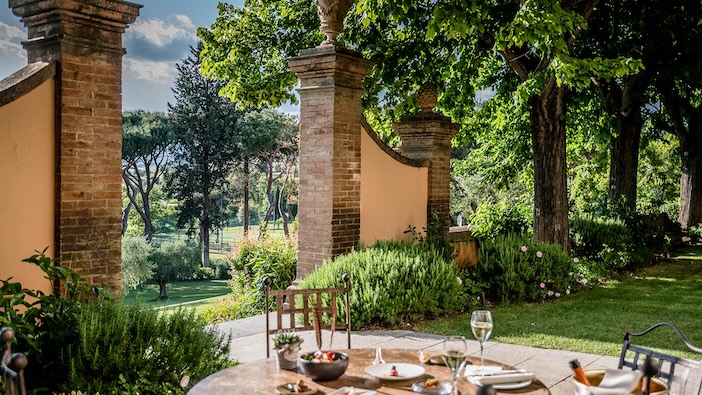
The fact that L’Andana offers world-class cuisine should come as no surprise, before Bartolini — one of Italy’s most awarded chefs — Alain Ducasse spent over a decade helping shape the gastronomic offering. During our stay, La Trattoria’s resident chef, Aniello Siano, gave us a private pasta-making class, later presenting our homemade tagliatelle to us poolside, tossed in a delicious bolognese — perfection.
Those dining at La Badiola will quickly become acquainted with their winery, Acquagiusta — its red is dangerously quaffable and well worth smuggling home. However, serious oenophiles should take the 50-minute drive to Petra — another Moretti masterpiece. “It looks like Chichén Itzá,” remarked one journalist upon clapping eyes on the space-age building rising out from Val di Cornia’s ancient cork forests. Thanks to Swiss architect Mario Botta, Petra has all the sass and intrigue of a James Bond lair. Exuding the presence of a fine art gallery or museum, one finds oneself respectfully whispering when venturing into its futuristic cellars, so as not to disturb the magic.
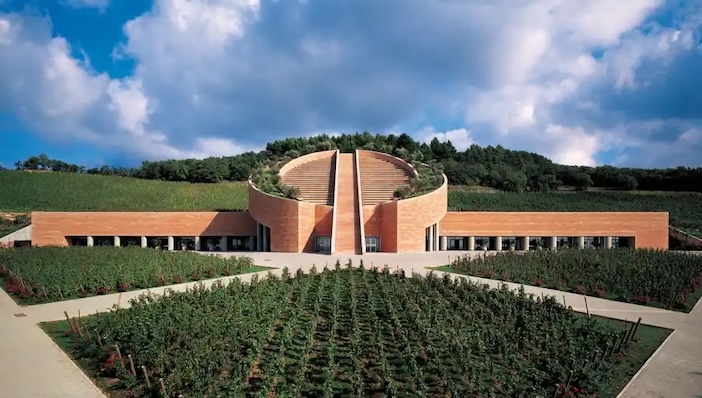
Granted, a jog wasn’t up there on my Maremma bucket list, but having heard whispers of a nature reserve just a few kilometres away, my curiosity (and lack of car) got the better of me. As dawn broke, I laced up my trainers and joined the lizards scuttling along the chicory-speckled track out of La Badiola. Past wildflower meadows and fields of blackened sunflowers, their heads bowed heavy with late-summer seed, I reached the inky shallows of Diaccia Botrona.
Standing on the banks of what was once Lake Prile, the most feared, malaria-ridden swamp in all of Maremma, I watched the sun slowly ignite the lagoons, painting them a dusky pink. Just then, stook knee deep in heather and history, I clocked a flamboyance of flamingos, fluffing and fanning in the now pinky shallows.
If Maremma still came with a one-way ticket, I’d have gladly vanished without trace.
L’Andana is a member of the Luxury Hotels of the World collective. It offers double rooms from €440 per night based on two sharing, including breakfast. For more information or to book, visit www.andana.it.
Images courtesy of L’Andana/Gianni Buonsante Photography

